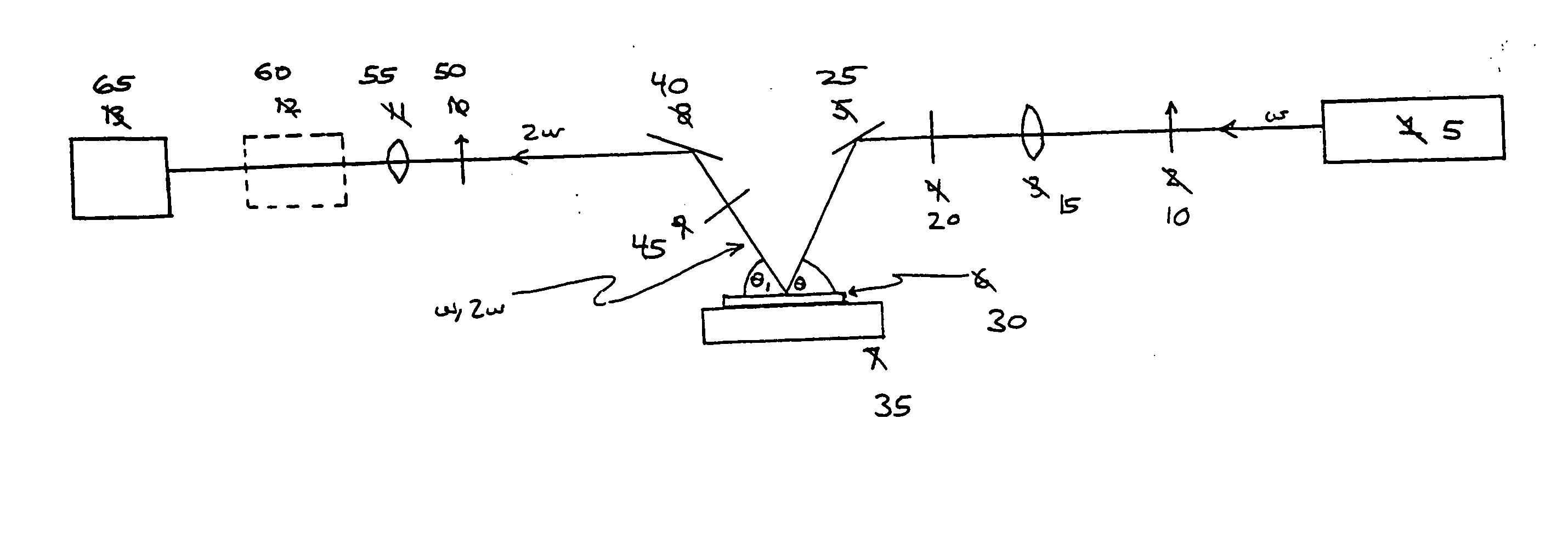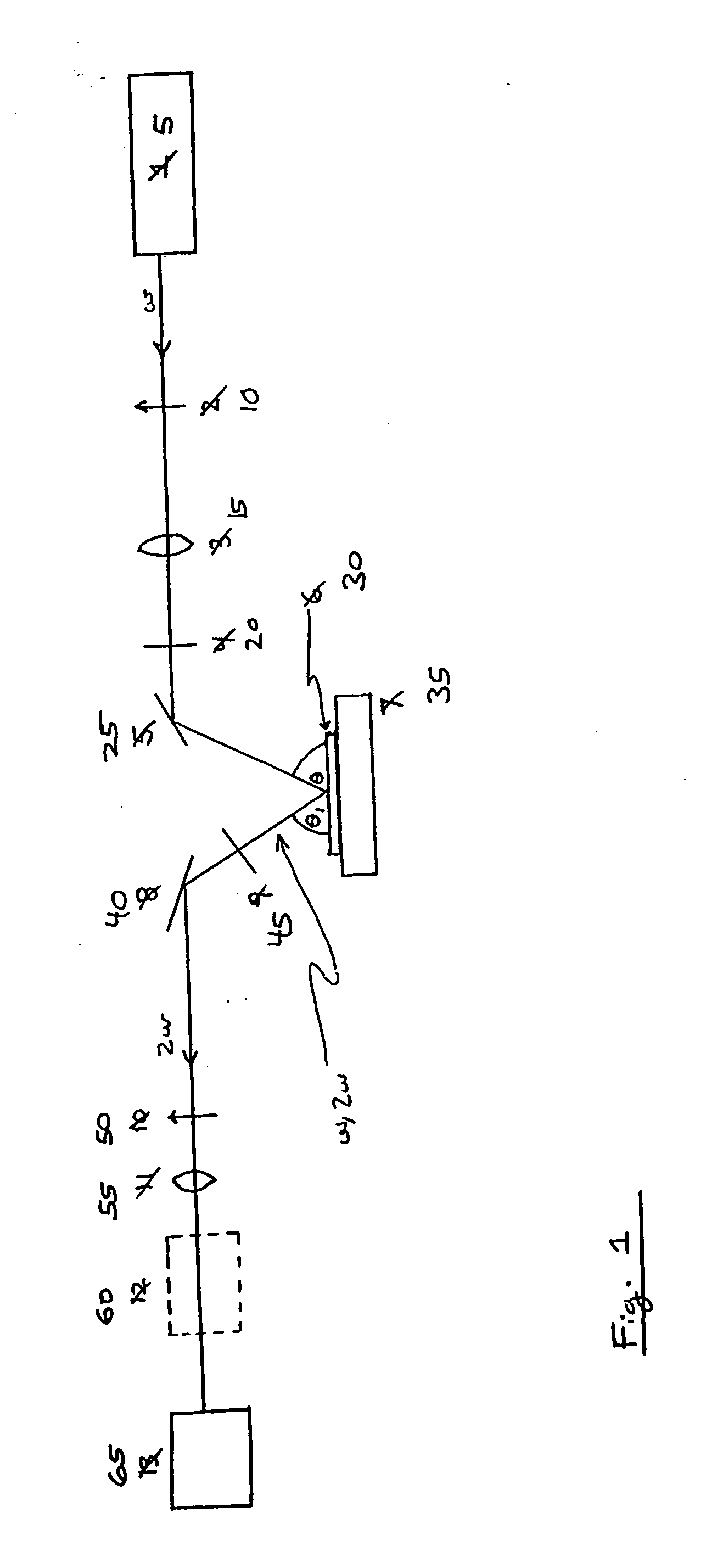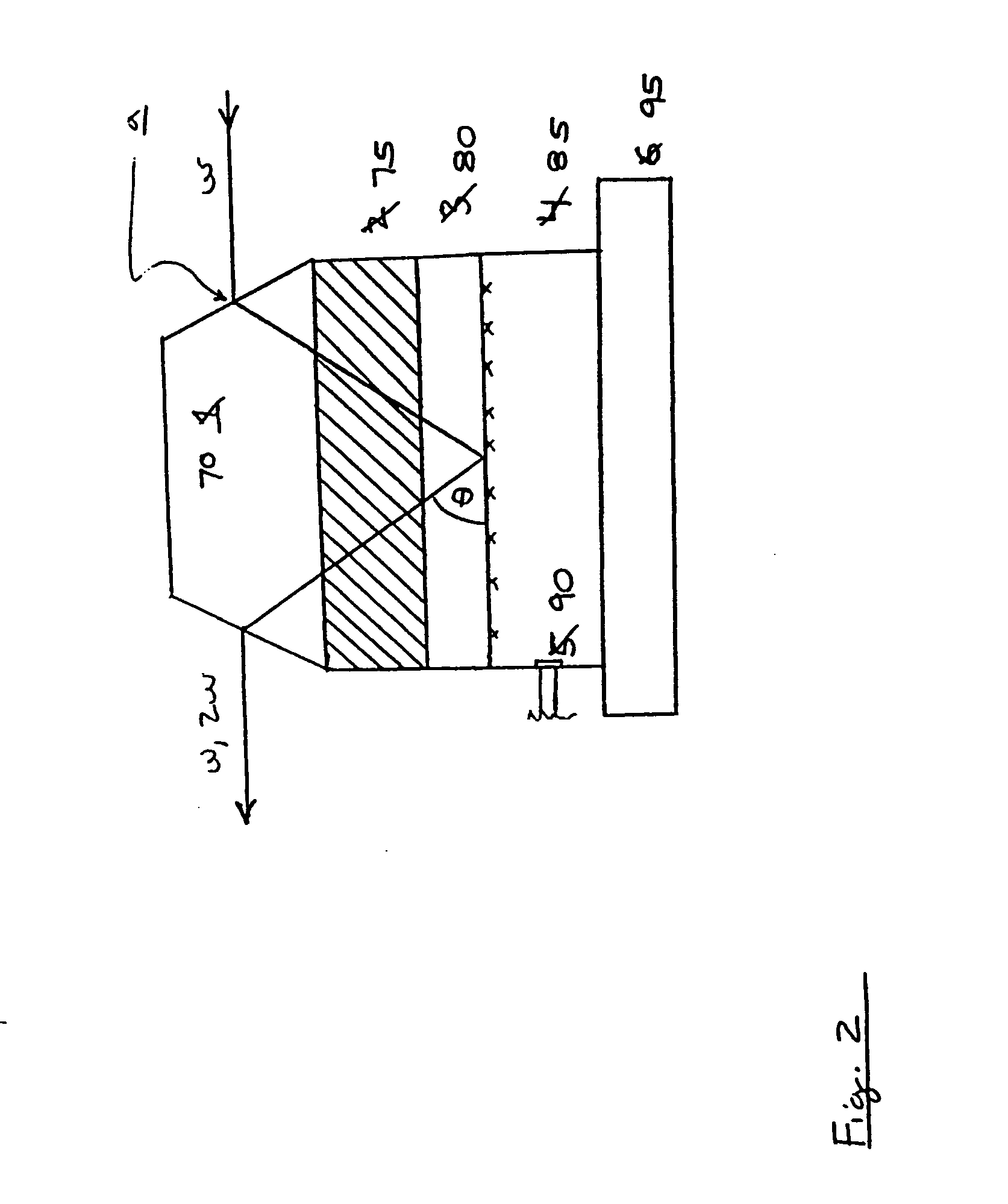Method and apparatus using a surface-selective nonlinear optical technique for detection of probe-target interactions without labels
- Summary
- Abstract
- Description
- Claims
- Application Information
AI Technical Summary
Benefits of technology
Problems solved by technology
Method used
Image
Examples
embodiment
Preferred Embodiment
[0249] In a preferred embodiment of the invention, a microarray of PNA oligonucleotides is created on a glass or silica coverslip following the instructions and references therein of Hoffmann, R., et al. “Low scale multiple array synthesis and DNA hybridization of peptide nucleic acids” Pept. Proc. Am. Pept. Symp., 15th (1999) 233-234 or those found in Matysiak, S., Hauser, N. C., Wurtz, S. and Hoheisel, J. D. “Improved solid supports and spacer / linker systems for the synthesis of spatially addressable PNA-libraries” Nucleosides Nucleotides 18 (1999) 1289-1291. The buffer or solution in contact with the PNA oligonucleotides can be chosen from a range of those known in the art. The buffer or solution containing the target component (target oligonucleotides—not PNAs) will contain an indicator molecule. In the preferred embodiment, the indicator molecule will be 4-[5-methoxyphenyl)-2-oxazolyl]pyridinium methanesulfonate (also known as 4PyMPO-MeMs), dissolved in the ...
PUM
 Login to View More
Login to View More Abstract
Description
Claims
Application Information
 Login to View More
Login to View More - R&D Engineer
- R&D Manager
- IP Professional
- Industry Leading Data Capabilities
- Powerful AI technology
- Patent DNA Extraction
Browse by: Latest US Patents, China's latest patents, Technical Efficacy Thesaurus, Application Domain, Technology Topic, Popular Technical Reports.
© 2024 PatSnap. All rights reserved.Legal|Privacy policy|Modern Slavery Act Transparency Statement|Sitemap|About US| Contact US: help@patsnap.com










